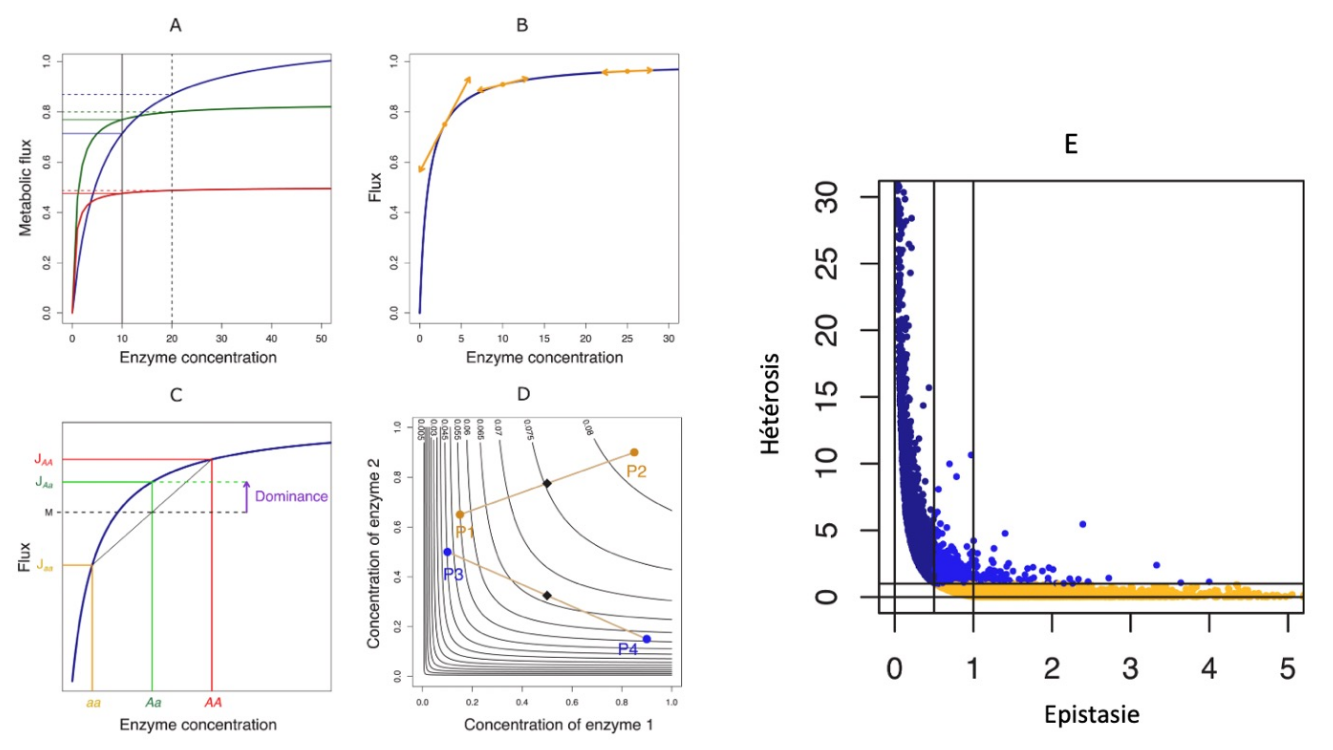
Genetic consequences of the non-linearitu of the genotype-phenotype relationship. A. Epistasis. B. Variation of the control coefficient as a function of the enzyme concentration. C. Dominance of the most active allele. D. Heterosis. E. Relation between heterosis and epistasis.
50 years ago, the Metabolic Control Theory - now called MCA, for Metabolic Control Analysis - was born. The MCA studies how a metabolic system responds to small perturbations close to the steady state (Kacser & Bums 1973, The control of flux. Symposia of the Soc. Exp. Biol. 27: 65; Heinrich & Rapoport 1974, A linear steady-state treatment of enzymatic chains. Eur. J. Bioch. 42: 89).
What can be considered as the first Systems Biology approach has proved to be extremely fruitful. In biochemistry, it showed that the control of metabolic fluxes is distributed between all the enzymes, which marginalizes the notion of limiting factor. The influence of MCA also extended to areas such as signal transduction and the cell cycle, but above all it provided a biologically realistic model of the non-linear relationship between genotype and phenotype. This latter aspect is the subject of an article[1] by Dominique de Vienne, Charlotte Coton and Christine Dillmann (IDEEV, GQE-Le Moulon) published as part of a special issue of BioSystems devoted to past and current advances of MCA. This article reviews the major contributions of this theory in genetics, quantitative genetics and evolution. Dominance, epistasis, heterosis (hybrid vigor), selective neutrality of molecular polymorphisms, dynamics of gene retention after genome duplication, skewed distribution of QTL effects, etc., are all fundamental observations that MCA has shed light on (Fig. A to D). Original results on the quantification of epistasis are also presented, along with a study showing the close structural relationships between epistasis and heterosis (Fig. E).